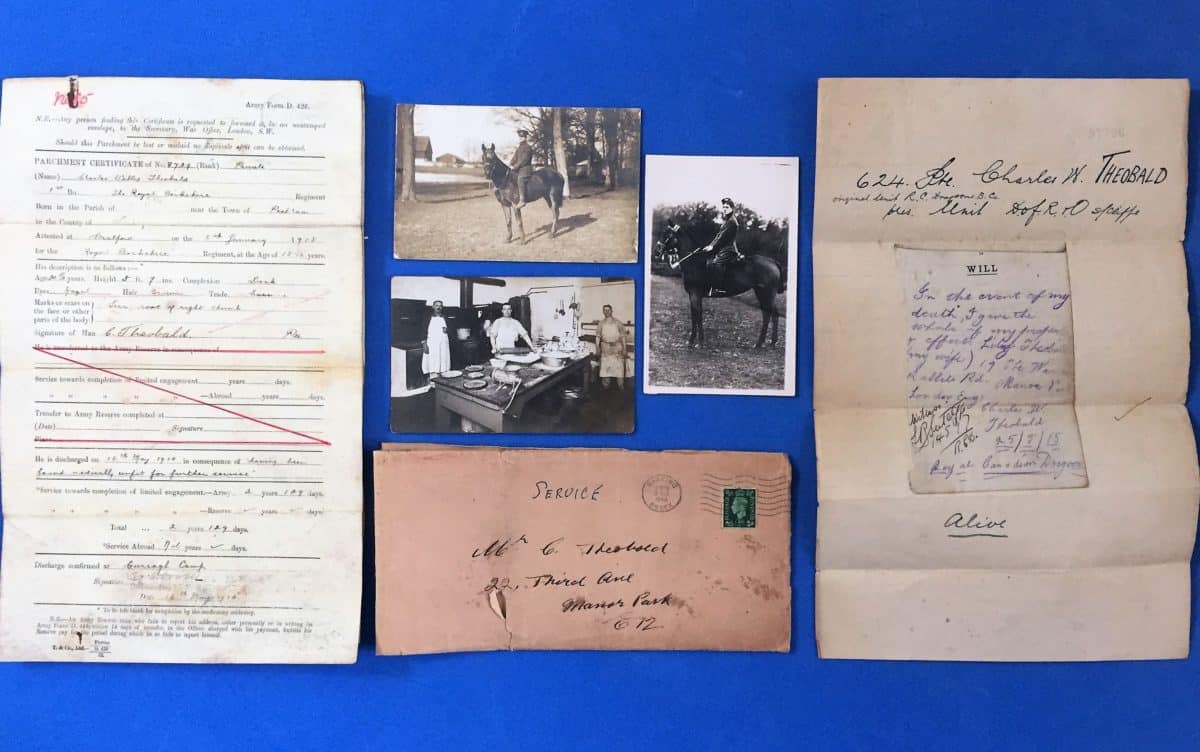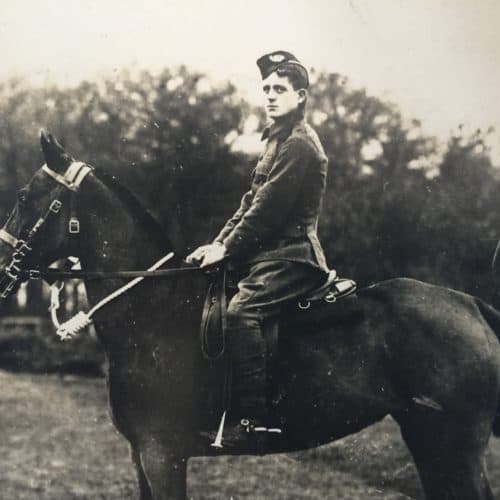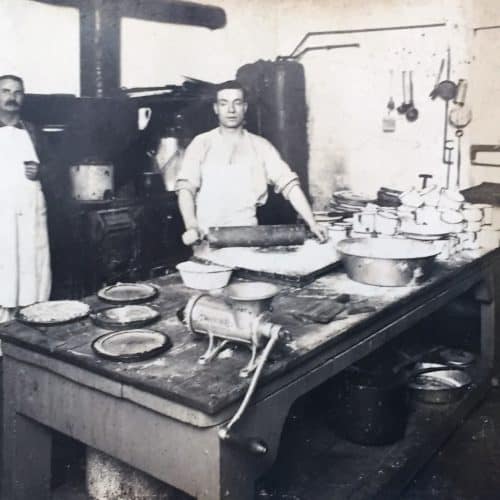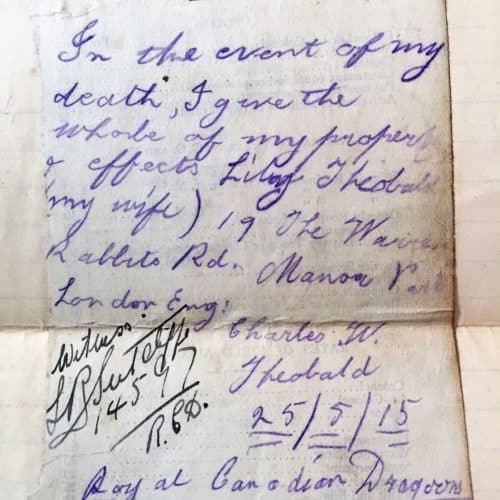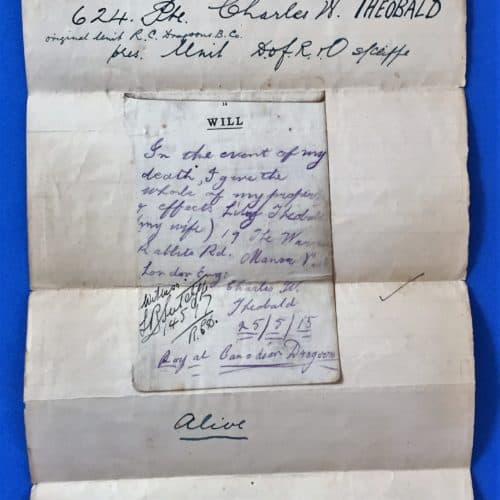WW1 18: Canadian soldiers
These documents and photographs belonged to Private Charles Willis Theobald, B Company, Royal Canadian Dragoons.
They can help us piece together the story of his life in World War 1.
Charles was one of thousands of soldiers from Canada who passed through Shorncliffe Camp, Folkestone in WW1 on the way to the Western Front.
Born in London, he had briefly been a soldier in the Royal Berkshire Regiment before becoming a baker. In 1913 he emigrated to Canada to join the Royal Canadian Dragoons.
Here’s Charles in early 1914, looking very impressive in his smart new uniform, on horseback in Hazelmere, British Columbia, Canada. However, the reality wasn’t quite so glamorous. He was employed in the kitchens, as a cook, making bread, pies, cakes and pastries for the troops.
Here’s Charles in the army kitchen (centre) rolling out pastry for several large pies. Look at the size of the rolling pin, mixing bowls and pans!
In October 1914 the Royal Canadian Dragoons embarked on a troopship to Britain to help fight the war. Like many Canadian soldiers they lived at Shorncliffe, for several months, where the soldiers did drill, kept fit, and enjoyed life in an English seaside town while awaiting orders to sail to France.
He also married his sweetheart, Lily Jackson in Dec 1914, while on Christmas leave in West Ham.
Finally the wait was over. Charles and the Royal Canadian Dragoons marched to Folkestone Harbour and embarked for France on 5 May 1915.
Within weeks they were involved in a desperate and bloody battle.
This is the will Charles made during the Battle of Festubert on 25 May 1915. Written on a page of a pocket service book, it was made shortly before his regiment went over the top at 6.30pm.
He writes…
In the event of my death, I give the whole of my property and effects [to] Lily Theobald (my wife), 19 The Warren, Rabbits Road, Manor Park, London, Eng[land]
[signed] Charles W Theobald
25/5/1915
Royal Canadian Dragoons
Witness
[signed] L R Sutely
14597
RCD [Royal Canadian Dragoons]
As a cook, Charles probably wasn’t fighting in the front line, but he was very close to it. The camp kitchens supplying the troops daily with fresh bread were just behind the lines, within shelling range of enemy.
During the Battle of Festubert nearly 2500 Canadians were killed or wounded. Overall they advanced just a few hundred yards, against lethal German shelling and machine gun fire.
Thankfully Charles was one of the lucky ones. The word Alive tells us he survived. The will was later posted back to Charles at Shorncliffe (abbreviated to S/cliffe) where he was based after his return from the Western Front.
The Royal Canadian Dragoons fought bravely on the Western Front throughout World War 1 including at the Battles of the Somme (1916) and Cambrai (1917).
Many injured Canadians were brought back to Folkestone for treatment, and several hundred are buried in Shorncliffe Military Cemetery.

